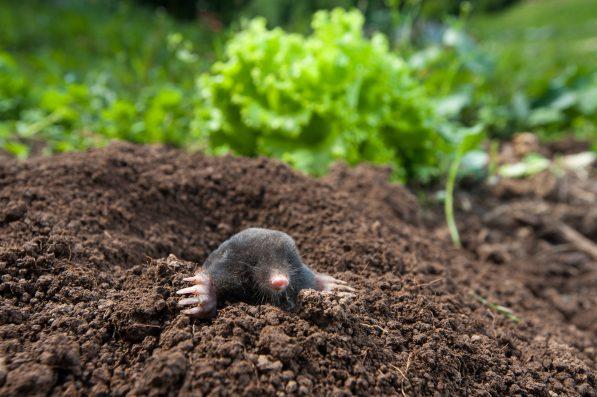Are You Battling Moles Or Voles? Here’s How To Identify Which Common Critter Is Wreaking Havoc On Your Garden While Keeping Them At Bay

Navigating the world of garden pests can sometimes feel like deciphering a mystery, especially when it comes to differentiating between the notorious moles and voles. Both can cause disarray in your otherwise tranquil garden.
But you don’t have to be left wondering which critter is wreaking havoc on your garden any longer. Let’s talk about distinct characteristics, damage patterns, and preventive measures for each of these common pests.
Identifying The Culprits
At first glance, moles and voles may seem similar, but there are crucial distinctions that can help you identify them accurately.
Moles are solitary, subterranean animals with a distinct appearance. They have velvety fur that can range from gray to brown, spade-like front paws perfect for digging, and a pointed snout.
Their eyes and ears are also minuscule, often concealed by fur.
On the other hand, voles, sometimes referred to as field mice or meadow mice, bear a closer resemblance to regular mice. They have rounded bodies, small eyes, short hairy tails, and their fur color varies from brown to gray.
How Moles And Voles Affect Your Lawn Differently
Both moles and voles can leave signs of their presence, but the kind of damage they inflict is distinct.

kaliantye – stock.adobe.com – illustrative purposes only, not the actual animal
Moles are insectivores and are generally beneficial as they feed on insects and grubs in the soil. However, their tunneling activities can cause raised ridges and create unsightly mounds of soil, known as molehills.
And these underground tunnels can sometimes lead to the accidental uprooting of plants in your garden.
Voles, on the other hand, have a plant-based diet. They are notorious for nibbling on plants, bulbs, seeds, and tree barks. Plus, the surface runways they create, often accompanied by small, irregularly shaped holes, are clear indicators of a vole infestation.
Keeping Both Moles And Voles At Bay
Preventing mole and vole infestations will require tailored strategies. When it comes to moles, focusing on controlling their food source is essential.
Using biological control methods, such as beneficial nematodes or milky spore powder, can reduce the population of grubs in your garden. Also, installing wire mesh or hardware cloth below the surface can act as a physical barrier that prevents moles from burrowing.
Since voles are herbivores, they can be managed by keeping your garden clean and tidy.
Removing plant debris, maintaining a well-manicured lawn, and trimming vegetation close to the ground will eliminate their hiding spots.
You can also set up mouse traps baited with peanut butter or apple slices along their runways. This is another effective method for controlling vole populations.
The Key Is Tailoring Your Strategy
Recognizing and understanding the differences between moles and voles is the first step toward safeguarding your garden.
By closely observing the signs of damage and implementing targeted preventive measures, you can maintain a vibrant and healthy garden. Just remember that the key to a pest-free garden is vigilance, timely action, and a tailored strategy to combat these common critters.
If true crime defines your free time, this is for you: join Chip Chick’s True Crime Tribe
Her Cousin Embarrassed Her In Front Of Everyone In A Restaurant For Having A Big Nose
In 1965, This Toddler Mysteriously Disappeared From Her Home While Playing In The Front Yard
Sign up for Chip Chick’s newsletter and get stories like this delivered to your inbox.
More About:Gardening